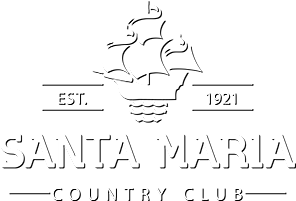The members of the Santa Maria Country Club obviously reflected the population of the area at large.
It is likely that the members in the 1920's and 1930's were representatives of the agricultural community and their business. The Santa Maria Valley in the 1920's were primarily agricultural and the urban dwellers basically supported the agricultural industry.
In the early 1930's, the Santa Maria oil field was discovered, which lead to increased oil activity. The community then included mainly agriculture and the oil industry with supporting urban services. This continued until the late 1950's when Vandenberg Air Force Base was activated and constructed. The population then became agricultural, oil, aerospace and military oriented. The membership reflected these demographic changes.
In the 1970's and 1980's, there had been an influx of retired people from the metropolitan areas. The oil industry, with environmental constraints, had declined significantly.
Until the membership structure was changed in order to raise funds to purchase the golf course property, the playing club membership was “working man” oriented. The club was administered so that a large segment of the population at large could participate in golf. The dues and initiation fees were kept low so that working men could become members and enjoy the game of golf. Since nontransferable memberships were involved and initiation fees were forfeitable, initiation fees were generally kept low, both by market conditions and by design. The membership thus constituted a cross section of the community at large.
After proprietary memberships were created and sold, the membership composition gradually changed. The current membership more closely resembled that of proprietary country clubs in southern California. This change also caused in part by the development of public golf courses in the area, such as Black Lake, Rancho Maria and La Purisima.
